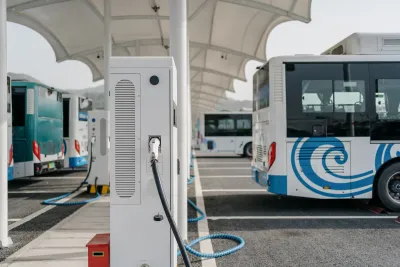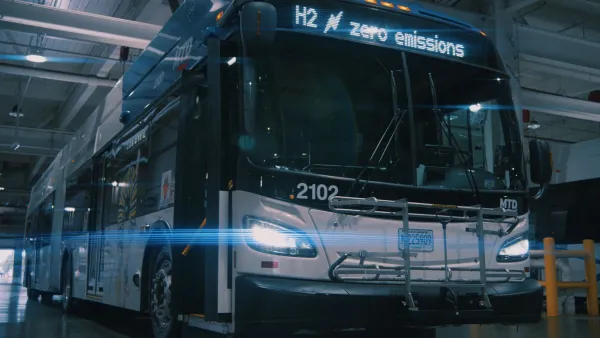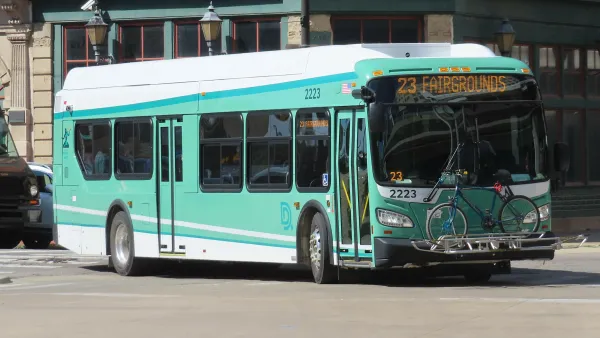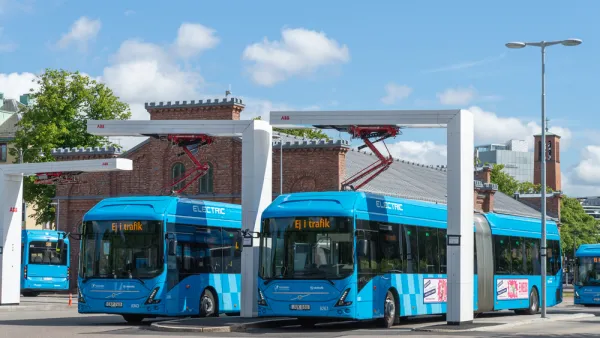Two programs designed to help transit agencies shift to electric and zero-emission fleets contain rules that could slow the adoption of zero-emission vehicles.

An analysis by Transportation for America finds that certain provisions of the federal Low or No Emission Vehicle (Low No) and Bus and Bus Facilities programs limit their effectiveness and “artificially constraining the supply of zero-emission funds, locking in unnecessary transit emissions for decades.”
Based on information obtained by T4A through a Freedom of Information Act (FOIA) request, T4A concludes that “the [Low No] program encourages transit agencies to buy diesel hybrid and compressed natural gas (CNG) buses instead of zero-emission buses running on electricity or hydrogen,” with 25 percent of the Low No program’s funding aimed at low-emission, not zero-emission, vehicles and projects.
While “The Bus and Bus Facilities program does not place constraints on fuel types when considering awards,” T4A found that “zero-emission projects had a one in six chance of being awarded while consuming 83 percent of the program’s available funding.”
According to T4A, “Congress can do more to ensure that these programs are working to accomplish emission reduction goals” by increasing funding for both programs to meet the overall demand for buses and facilities; creating incentives for both programs to leverage other funding sources; and increasing transparency of the program by making basic application and award information available on FTA’s website and looking for ways to simplify the application process.”
FULL STORY: Greener Fleets: How federal dollars can supply the demand for clean transit

Analysis: Cybertruck Fatality Rate Far Exceeds That of Ford Pinto
The Tesla Cybertruck was recalled seven times last year.

National Parks Layoffs Will Cause Communities to Lose Billions
Thousands of essential park workers were laid off this week, just before the busy spring break season.

Retro-silient?: America’s First “Eco-burb,” The Woodlands Turns 50
A master-planned community north of Houston offers lessons on green infrastructure and resilient design, but falls short of its founder’s lofty affordability and walkability goals.

Test News Post 1
This is a summary

Analysis: Cybertruck Fatality Rate Far Exceeds That of Ford Pinto
The Tesla Cybertruck was recalled seven times last year.

Test News Headline 46
Test for the image on the front page.
Urban Design for Planners 1: Software Tools
This six-course series explores essential urban design concepts using open source software and equips planners with the tools they need to participate fully in the urban design process.
Planning for Universal Design
Learn the tools for implementing Universal Design in planning regulations.
EMC Planning Group, Inc.
Planetizen
Planetizen
Mpact (formerly Rail~Volution)
Great Falls Development Authority, Inc.
HUDs Office of Policy Development and Research
NYU Wagner Graduate School of Public Service




























